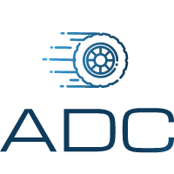Observations
How enhanced observation and planning can take the stress out of driving. How can we plan if we do not see.


The Eyes Have It: Your Guide to Roadcraft-Inspired Observations
Ever heard the saying, "Driving is 90% mental"? Well, a huge chunk of that mental effort goes into observation – the art of seeing and interpreting everything happening around you on the road. Let's take a Roadcraft-inspired deep dive into this essential skill and boost your driving awareness!
The Eyes: Your High-Definition Dashboard
Think of your eyes as your car's high-definition dashboard. They provide a constant stream of information about your surroundings – from the road ahead to the cars behind you, from traffic lights to pedestrians on the pavement. But like any dashboard, it's useless if you don't know how to read it.
Beyond the Obvious: Scanning for Clues
Good observation is more than just staring straight ahead. It's about actively scanning your environment for clues about what might happen next.
Look ahead: Scan as far down the road as you can see, anticipating changes in the road layout, traffic flow, or potential hazards.
Check your mirrors: Regularly glance at your rearview and side mirrors to keep tabs on what's happening behind and beside you.
Shoulder checks: Before changing lanes or turning, always do a quick shoulder check to eliminate blind spots.
Peripheral vision: Use your peripheral vision to detect movement from the sides of the road – a cyclist approaching a junction, a pedestrian stepping off the curb, or a car drifting into your lane.
The Art of Anticipation: Predicting the Future
Observation isn't just about reacting to what's happening now, it's about anticipating what might happen next. The seen and unseen. By observing the behaviour of other road users, the road conditions, and the environment around you, you can often predict potential hazards and adjust your driving accordingly.
Observation in Action: Real-World Examples Linking Hazards
An empty bus stop on your left: Is there a bus at the next stop stopped in the road?
Brake lights ahead: You might expect traffic to be slowing down.
Bins are at the side of road: Where's the bin lorry?
Hedge cuttings on the road: Where's the tractor?
By spotting these clues early on and thinking about the 'what if?', you can anticipate hazards before they are seen, so you can react smoothly and calmly without surprise. Looking into the future?..
Observation Habits: Train Your Brain
Good observation is a habit that takes time and practice to develop. Make it a conscious effort to scan your surroundings regularly, even when driving on familiar roads. The more you practice, the more it will become second nature. Far ground, middle ground, near ground and repeat the process. There should be no surprises.
Observation: Your Driving Superpower
Think of observation as your driving superpower. By honing your ability to see, interpret, and anticipate, you'll become a safer, more confident, and more aware driver. So, get out there, practice, and unlock your full observation potential!
